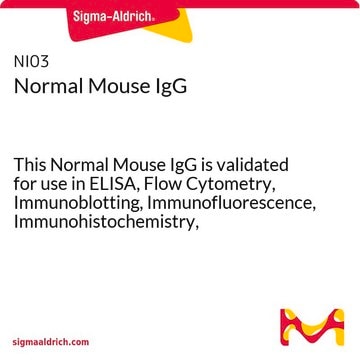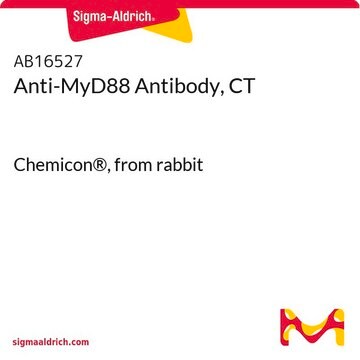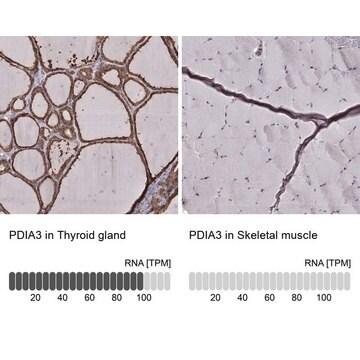MAB3422
Anti-Histone Antibody, clone H11-4
clone H11-4, Chemicon®, from mouse
Synonym(s):
Anti-Histone antibody
About This Item
Recommended Products
biological source
mouse
Quality Level
antibody form
purified antibody
antibody product type
primary antibodies
clone
H11-4, monoclonal
species reactivity
hamster, bovine, opossum, rat, human, Xenopus
species reactivity (predicted by homology)
mammals
manufacturer/tradename
Chemicon®
technique(s)
immunocytochemistry: suitable
immunohistochemistry: suitable
western blot: suitable
isotype
IgG1
shipped in
wet ice
target post-translational modification
unmodified
Gene Information
human ... H2AC21(317772)
General description
Specificity
Immunogen
Application
Epigenetics & Nuclear Function
Histones
1:500 dilution of a previous lot was used.
Immunocytochemistry:
A 1-5 µg/mL concentration of a previous lot was used on Immunocytochemistry.
Immunohistochemistry:
A 1-5 μg/mL concentration of a previous lot was used on Immunohistochemistry.
Optimal working dilutions must be determined by end user.
Quality
Physical form
Storage and Stability
The Iyophilized antibody is stable at 2–8°C. Store the reconstituted antibody in aliquots at -15 to -25°C for up to 12 months.Repeated freezing and thawing should be avoided.
Analysis Note
All tissue
Other Notes
Legal Information
Disclaimer
Not finding the right product?
Try our Product Selector Tool.
Storage Class Code
10 - Combustible liquids
WGK
WGK 2
Certificates of Analysis (COA)
Search for Certificates of Analysis (COA) by entering the products Lot/Batch Number. Lot and Batch Numbers can be found on a product’s label following the words ‘Lot’ or ‘Batch’.
Already Own This Product?
Find documentation for the products that you have recently purchased in the Document Library.
Our team of scientists has experience in all areas of research including Life Science, Material Science, Chemical Synthesis, Chromatography, Analytical and many others.
Contact Technical Service








